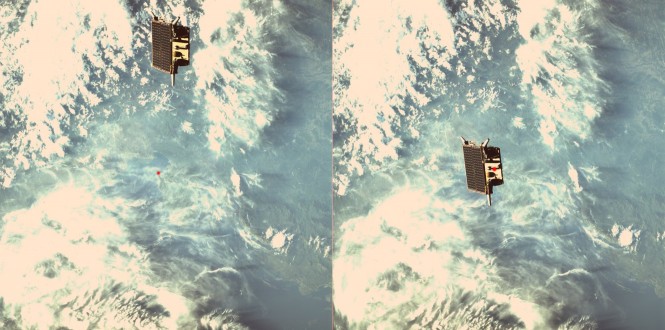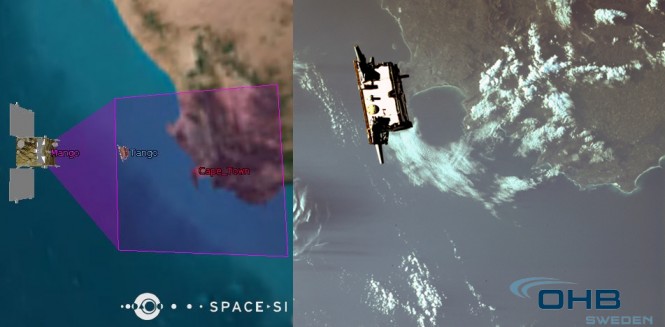SPACE-SI Formation Flying Experiments on Prisma Satellites
The formation flying of small satellites offers great potentials for a whole spectrum of new missions such as application of distributed instruments for astronomy, communications, metrology and remote sensing of Earth as well as in-orbit inspections and servicing. To investigate this newly emerging technology SPACE-SI and OHB Sweden performed a set of formation flying experiments in September 2011 with Prisma satellites Mango and Tango. that were launched into a sun synchronous orbit with 725 km altitude and 06.00h ascending node in June 2010. In the SPACE-SI formation flying experiments the critical maneuvers for three types of missions were investigated with respect to in-orbit performances.
– In-flight simulated radar interferometry where one satellite acts as the SAR transmitter and receiver, while the other is a receiver only. Mango and Tango were flown one behind the other (along-track) separated by a distance of approximately 200 m for two consecutive orbits. During the imaging the relative separation of the satellites had to be stable and precisely known in order to enable interferometric processing and achieve good results. Absolute and relative positions were used to evaluate the accuracy of the results (e.g. digital elevation model) that can be obtained from the constellation of two small SAR satellites.
– Observation of non-co-operative objects – space debris: It is expected that non-co-operative objects such as space debris will become a serious problem in the near future, as the orbits of these objects often overlap with trajectories of operational spacecrafts, and represent a potential collision risk. In order to remove the debris, it must be identified. Two experiments were performed to simulate the required procedures:
- Orbit identification: On the basis of the space debris TLEs the Mango’s camera was directed in the direction of the point of the closest approach and several images were taken in a sequence.
- Close observation during three Mangos’s encircling of Tango (which simulated the debris) in order to make a 3D model of the observed object. In order to have diversified images, two relative orbit planes were used.
The timing of imaging was adjusted to have some target locations on the Earth (Kuwait, Djibouti, Crete) in the background
– In-flight simulated distributed instrument where the first satellite holds the optical system with lenses and/or mirrors and the other one the detectors (sensors). This experiment was performed in two different versions:
- The satellites were flown in approximately the same orbit (parallel flying – in-track displacement) – a mirror at an angle of approximately 45° is needed to reflect the beam to the sensors. In the experiment the satellites had flown one behind the other at a distance of approximately 5 m to simulate a multispectral imaging with the resolution of a few meters. During the imaging both systems have to be precisely aligned and kept at a constant relative distance and orientation. The feasibility of constructing a high-resolution instrument with two small satellites was evaluated with the analysis of relative positions obtained from telemetry data.
- The satellites were flown in slightly different orbits (parallel flying – radial and cross-track displacement). The satellites were aligned with predefined target locations on the Earth, such as Cape Town, Piran and Ushuaia.

